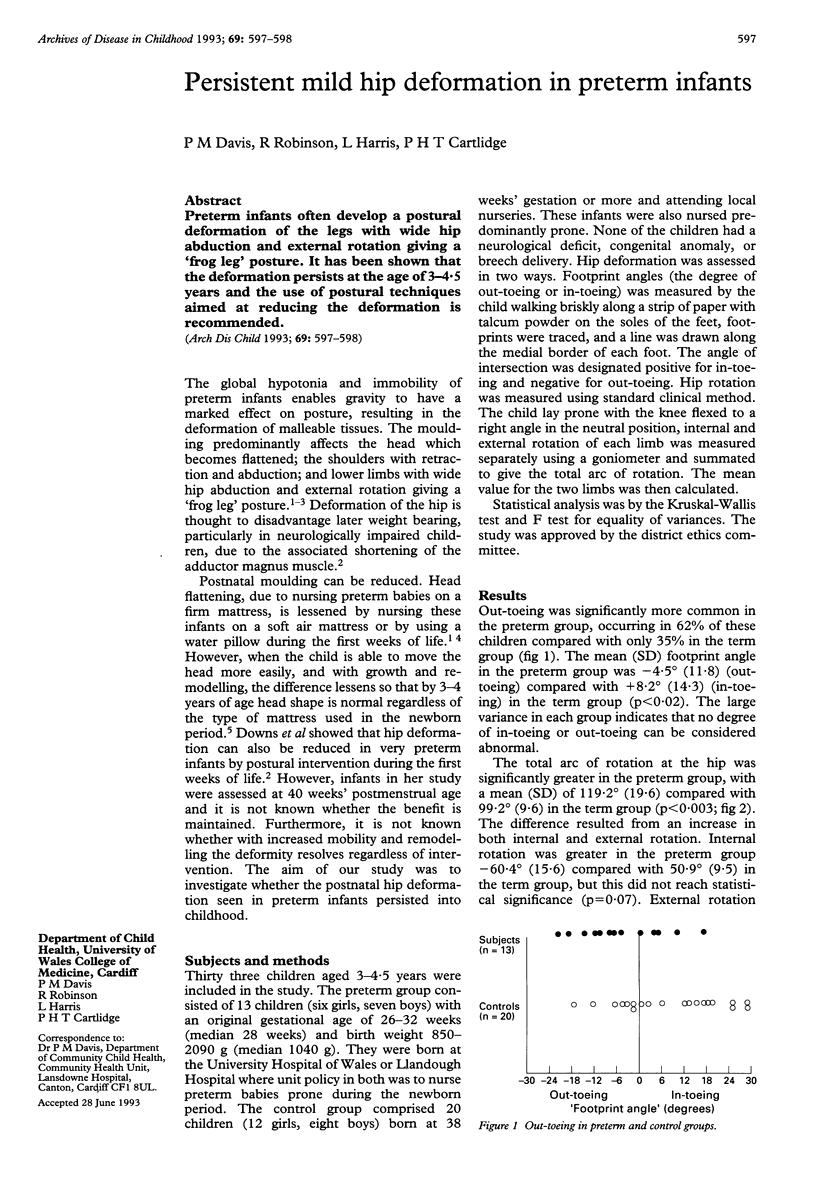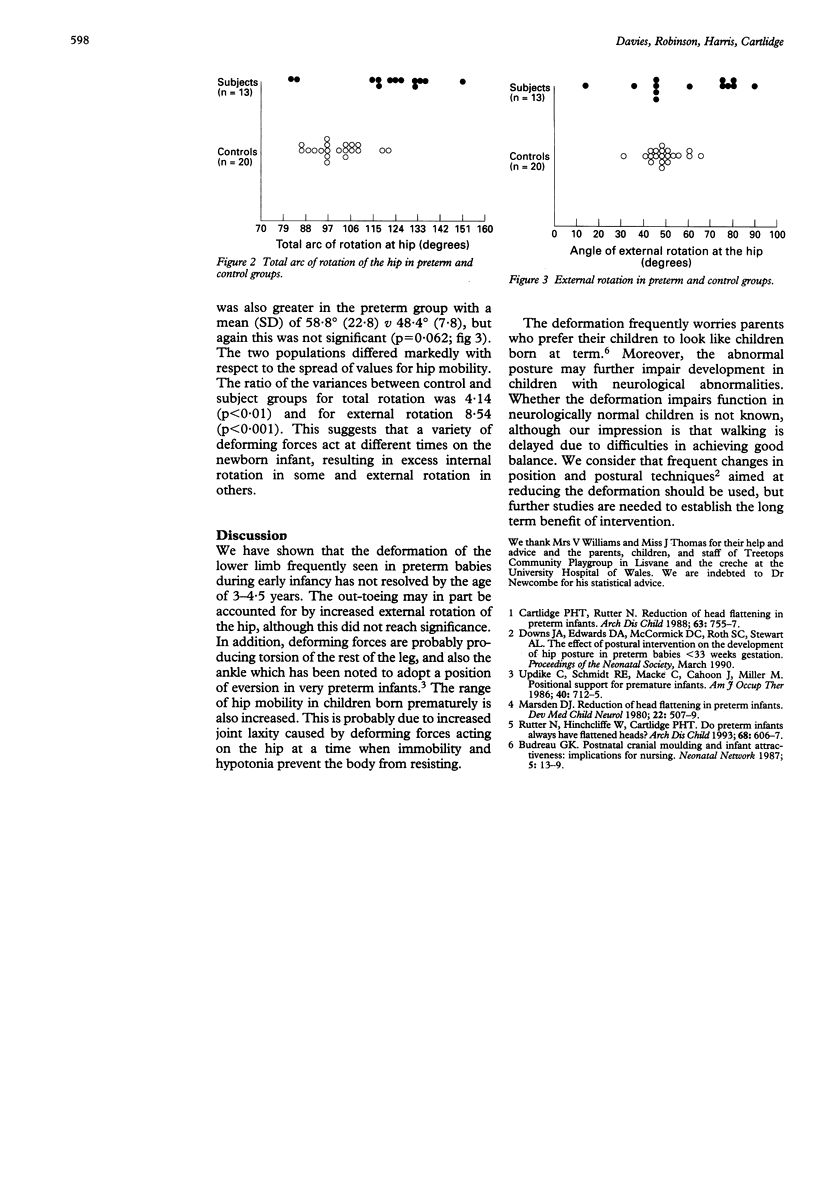Abstract
Preterm infants often develop a postural deformation of the legs with wide hip abduction and external rotation giving a 'frog leg' posture. It has been shown that the deformation persists at the age of 3-4.5 years and the use of postural techniques aimed at reducing the deformation is recommended.
Full text
PDF

Selected References
These references are in PubMed. This may not be the complete list of references from this article.
- Budreau G. K. Postnatal cranial molding and infant attractiveness: implications for nursing. Neonatal Netw. 1987 Apr;5(5):13–19. [PubMed] [Google Scholar]
- Cartlidge P. H., Rutter N. Reduction of head flattening in preterm infants. Arch Dis Child. 1988 Jul;63(7 Spec No):755–757. doi: 10.1136/adc.63.7_spec_no.755. [DOI] [PMC free article] [PubMed] [Google Scholar]
- Marsden D. J. Reduction of head flattening in preterm infants. Dev Med Child Neurol. 1980 Aug;22(4):507–509. doi: 10.1111/j.1469-8749.1980.tb04356.x. [DOI] [PubMed] [Google Scholar]
- Rutter N., Hinchliffe W., Cartlidge P. H. Do preterm infants always have flattened heads? Arch Dis Child. 1993 May;68(5 Spec No):606–607. doi: 10.1136/adc.68.5_spec_no.606. [DOI] [PMC free article] [PubMed] [Google Scholar]
- Updike C., Schmidt R. E., Macke C., Cahoon J., Miller M. Positional support for premature infants. Am J Occup Ther. 1986 Oct;40(10):712–715. doi: 10.5014/ajot.40.10.712. [DOI] [PubMed] [Google Scholar]


